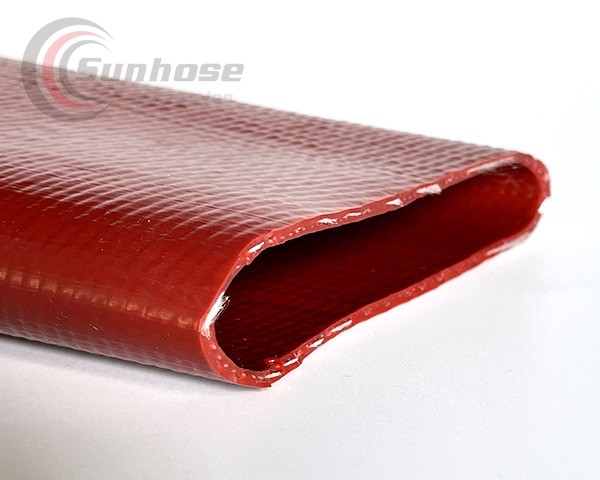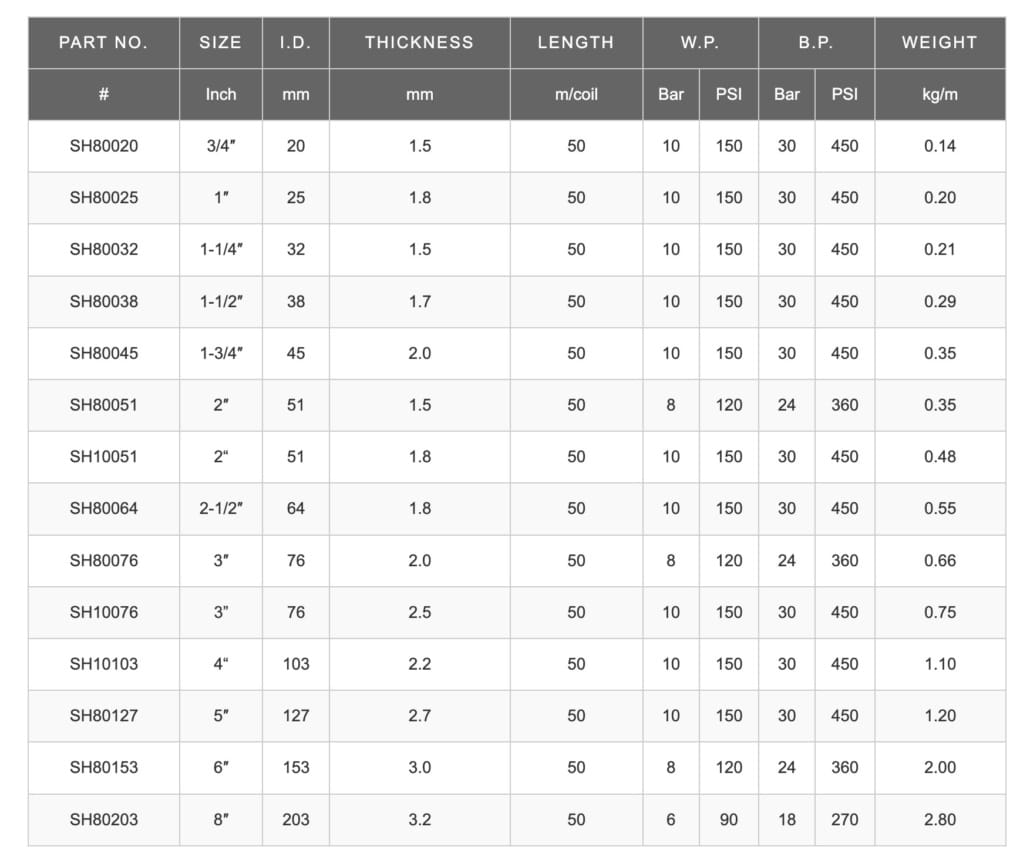Heavy-Duty Layflat Hose: The Ultimate Solution for Fluid Transfer
In the realm of fluid transfer and irrigation systems, a crucial component that stands out for its efficiency and versatility is the heavy-duty layflat hose. Designed to withstand high pressure and provide reliable fluid conveyance, this type of hose has become a staple in various industries. In this article, we will delve into the features, applications, and benefits of heavy-duty layflat hoses, highlighting their essential role in modern fluid handling operations.
Understanding Heavy-Duty Layflat Hoses
A heavy-duty layflat hose is a specialized type of hose made from high-quality materials, including reinforced synthetic fibers and a rugged outer cover. The “layflat” characteristic refers to its ability to roll flat for easy storage and transportation, making it convenient and space-saving when not in use.

Red Heavy duty layflat hose
Advantages of Heavy-Duty Layflat Hoses
The heavy-duty layflat hose offers several advantages that make it an indispensable tool in fluid transfer applications:
1. High Pressure Resistance
One of the primary benefits of these hoses is their exceptional resistance to high pressure. They can handle heavy-duty tasks that involve transferring fluids under substantial pressure without compromising their structural integrity.
2. Lightweight and Portable
Despite their robust construction, heavy-duty layflat hoses remain lightweight and easy to handle. This portability is a significant advantage when compared to traditional rigid pipes, which can be cumbersome and challenging to transport.
3. Flexibility and Versatility
Heavy-duty layflat hoses are incredibly flexible, allowing them to bend and maneuver around obstacles with ease. This flexibility makes them ideal for various applications, including agricultural irrigation, construction, mining, and firefighting.
4. Quick Deployment and Retrieval
Their ability to roll flat enables rapid deployment and retrieval, saving valuable time during fluid transfer operations. This feature is particularly beneficial in emergency situations or time-sensitive tasks.
5. Chemical and UV Resistance
Many heavy-duty layflat hoses are engineered to resist chemicals and UV rays, making them suitable for use in a wide range of environments, including harsh weather conditions and exposure to various chemicals.
Applications of Heavy-Duty Layflat Hoses
The versatility of heavy-duty layflat hoses opens up a multitude of applications across different industries. Some common uses include:
1. Agricultural Irrigation
In the agricultural sector, heavy-duty layflat hoses play a crucial role in transporting water for irrigation purposes. Their flexibility and ease of use make them an ideal choice for large-scale watering needs in farms and fields.
2. Construction and Dewatering
During construction projects, these hoses are employed for dewatering excavations and controlling water levels at construction sites. Their high-pressure resistance and durability make them reliable tools for such tasks.
3. Mining and Slurry Transfer
In mining operations, heavy-duty layflat hoses are utilized to transfer slurry, water, and other fluids over long distances. Their ability to handle abrasive materials and rough terrains makes them suitable for mining applications.
4. Firefighting and Emergency Response
Firefighters often rely on heavy-duty layflat hoses to deliver water to extinguish fires effectively. The quick deployment and high-pressure capabilities of these hoses are essential in firefighting emergencies.
Choosing the Right Heavy-Duty Layflat Hose
Selecting the appropriate heavy-duty layflat hose depends on specific requirements and applications. Consider the following factors:
1. Size and Diameter
Choose the hose size and diameter that match the intended fluid flow and pressure requirements.

Datasheet of heavy duty layflat hose
2. Material Composition
Ensure that the hose material is compatible with the fluids to be transferred and can withstand any environmental challenges.
3. Working Pressure and Temperature
Check the hose’s working pressure and temperature range to ensure it aligns with the demands of the intended application.
Conclusion
The heavy-duty layflat hose proves to be a game-changer in the world of fluid transfer and irrigation systems. With its high-pressure resistance, portability, and versatility, it has earned its place as a go-to solution for various industries, including agriculture, construction, mining, and firefighting. By choosing the right heavy-duty layflat hose for specific applications, businesses and organizations can optimize their fluid handling operations, improving efficiency and productivity.
FAQs:
Can heavy-duty layflat hoses be repaired if damaged?
Yes, many heavy-duty layflat hoses come with repair kits that allow for quick and temporary fixes. However, for significant damages, it is recommended to replace the hose to ensure safety and efficiency.
Can heavy-duty layflat hoses handle abrasive materials?
Absolutely! These hoses are built to withstand abrasive materials commonly encountered in mining and slurry transfer applications.
Are heavy-duty layflat hoses resistant to kinking?
Yes, heavy-duty layflat hoses are designed to resist kinking, ensuring a smooth and uninterrupted fluid transfer process.
Can these hoses be used in extreme weather conditions?
Yes, many heavy-duty layflat hoses are engineered to withstand extreme weather conditions, including high temperatures and exposure to UV rays.

 sunhose
sunhose